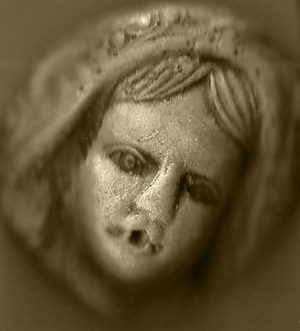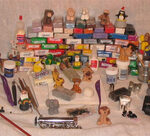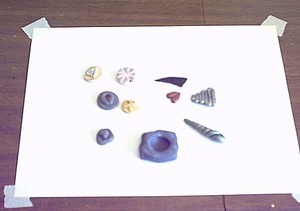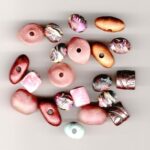Anyone who has worked with polymer clay knows it is a versatile medium with endless possibilities. If you’ve been fortunate enough to have viewed galleries of finished polymer clay pieces, you know that it’s not just for kids, and not just about making simple beads and crude, miniature animals. There is a simple method you can use, to create your own molds for use in polymer clay projects.
First-it’s important to discuss reasons why you would want to create a mold, when you can already shape polymer clay into anything you desire. The answer lies in the question itself. Using a mold in polymer clay projects creates a pleasing, detailed aesthetic quality that cannot be fashioned by free sculpture. Sculpting has its own wonderful merits, but a mold form is indicated to attain a specific value. And when using self created molds, there is no sense of prefabrication or false perfection, rather, the final result is a suitable folksy remnant which lends itself perfectly to any piece. Another reason molds are indicated is that they create a ‘positive’ copy. That is, molds themselves are negative vessels, so anything impressed into them will retain a true full form. Use molds to create embellishments and textures, dimension, and design within your polymer clay projects.
Materials you will need
Object to act as model for the mold
Polymer clay
Small craft sticks or toothpicks (optional)
Oven
Directions
If necessary, clean the surface of the model-object you are using, to make sure no debris or anything else will be transferred into the clay. Form a good size chunk of polymer clay into an oval shaped ball. Apply the clay the the object carefully but with firm pressure, pressing the clay down with your fingers or craft sticks, to make sure any small features are filled with clay. Pry the clay off the object with care, being mindful of retaining the integral form of the object. You now have a mold shape. If necessary, use a craft stick or toothpick to remove or reshape any superfluous or thin areas of clay around the outside edges. To harden, bake the mold according to the instructions on the clay package. When finished, you will have a mold you can use over and over.
Notes and tips
You can use nearly any small 3 dimensional object or interesting raised surface area to create a mold. This is a chance to really think outside the box and get creative. One benefit of this mold-making method is the ‘mobility’ of the clay. All you really need to do is be able to access the desired surface with the clay. You can make molds by pressing the clay into detailed areas of ornate Victorian yard gates, cemetery angels’ wings, cherubic faces upon headstones, faux baroque frames, skeleton keys, and all manner of interesting objects. Just make sure everything you are accessing in public is meant to be touched, and that pressing polymer clay onto its surface is appropriate.
One of the best objects to lend itself best to mold making and polymer clay projects are faces. Using facial imagery in polymer crafts lends a striking and profound, beautiful effect. They never seem to come out quite the same, either. Some even seem to actually retain somewhat of a personality. It may sound crazy, but just wait until you start working with face molds.
It may take some experimentation to find a proper object for molding faces. I have found that smooth, hard plastic doll or small statues make the best surface for making facial molds. My favorite face mold is one I fashioned out of a foot-high, glow-in-the-dark statue of the Virgin Mary, that I found in a thriftstore for a dollar. The thriftstore and yard sales are great resources for small statues like this. In general, the type of little knick-knack statues found in dollar stores do not make good face molds. The quality of features is low, and the texture is too inconsistent and rough. The smoother, and more rounded and basic (less detail and texture) the features, the better the resultant mold.
When determining the amount of clay to use in making the mold, err on the side of more. Although polymer clay is quite strong after baking, it is still breakable. If the mold is too thin, it can easily crack. Make sure the body of the mold is substantial, and that there is some overflow clay around the edges. If it does break, you can always make another; just be sure to keep track of the original object used.
Although some people prefer Fimo, my personal favorite is Sculpey brand. It is very inexpensive at about $1.50 a square, can be purchased in larger blocks, and can be found in any good craft store. There are many polymer clay books, online craft guides and galleries with good information and beautiful finished pieces. Polymer clay pieces and crafts can be incorporated into many other, larger craft and art projects: jewelry, scrapbooking, card and book making, gift tags, and collages are just a few in which clay can add a fancy, lovely touch.






